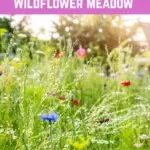
Remember when fireflies were flickering and lighting up the the night sky in the thousands, sometime around midsummer?
At present, that childhood joy is but a regional occurrence. The last time I saw just a few lightning bugs was three years ago in a marshy valley in rural Romania; before that – about a decade prior.
And in the daytime, have you also noticed a loss of insect diversity in the past thirty or more years?
If so, you are not alone. You may be able to judge by the cleanliness of your car windows/lights after a drive in the countryside or the amount of pollinators in your garden and orchard.
The killing off of insects is alarming!
A recent study suggests that 40% of all insect species are in decline and could continue to die out in the coming years.
The following insects are most at risk:
- Butterflies and moths (Lepidoptera)
- Sawflies, wasps, bees and ants (Hymenoptera)
- Dung beetles (Coleoptera sp.)
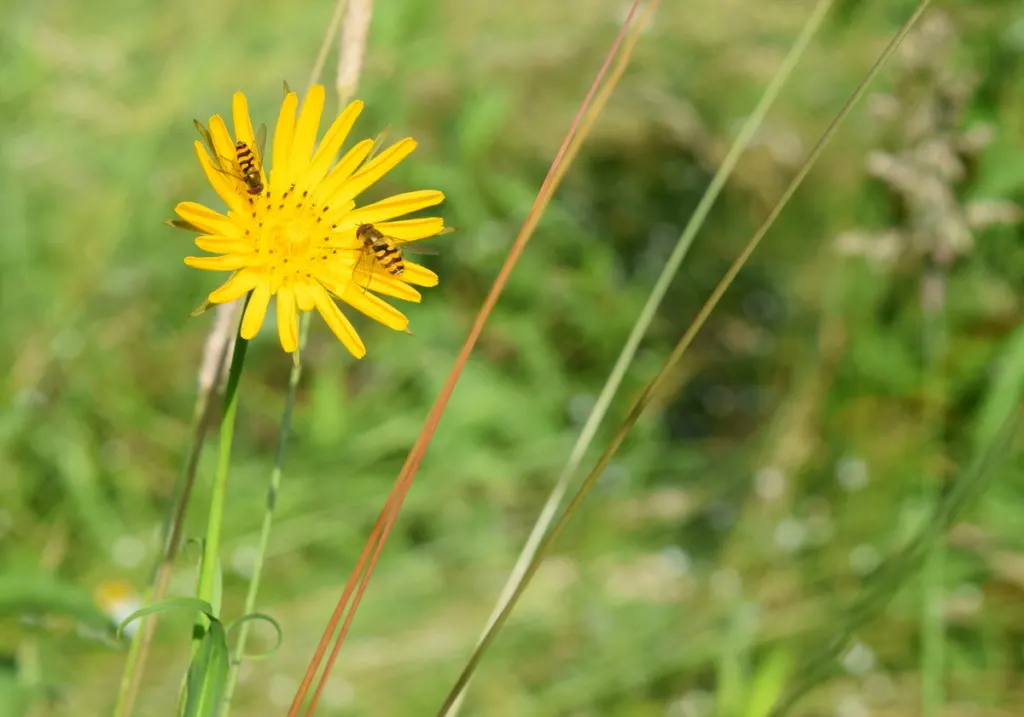
Before we can understand how to begin to reverse this situation, we must explore the reasons for such a great loss.
Hard as the truth is to swallow, it turns out, that it is mostly the fault of humans.
Habitat loss is the number one culprit for the decline of insect populations worldwide.
This happens in large scale as small farms are eaten up by larger, more intensive agriculture.
With gigantic farms come more expansive fields (and fewer edges!), that are continuously fertilized and sprayed with insecticides, pesticides and other agro-chemicals questionable in origin. All for the sake of feeding the growing plant, some may proclaim, but what if we dared to be different, think up an alternative plan and foster insect populations instead?
Insect decline also happens because of planting non-native, invasive species that mess with flora and fauna alike.
Climate change also has a hand in insect decline, as does your perfectly maintained lawn.
The traditional lawn and why traditions need to change
Run a quick search for images of a traditional lawn and green is what you will find.
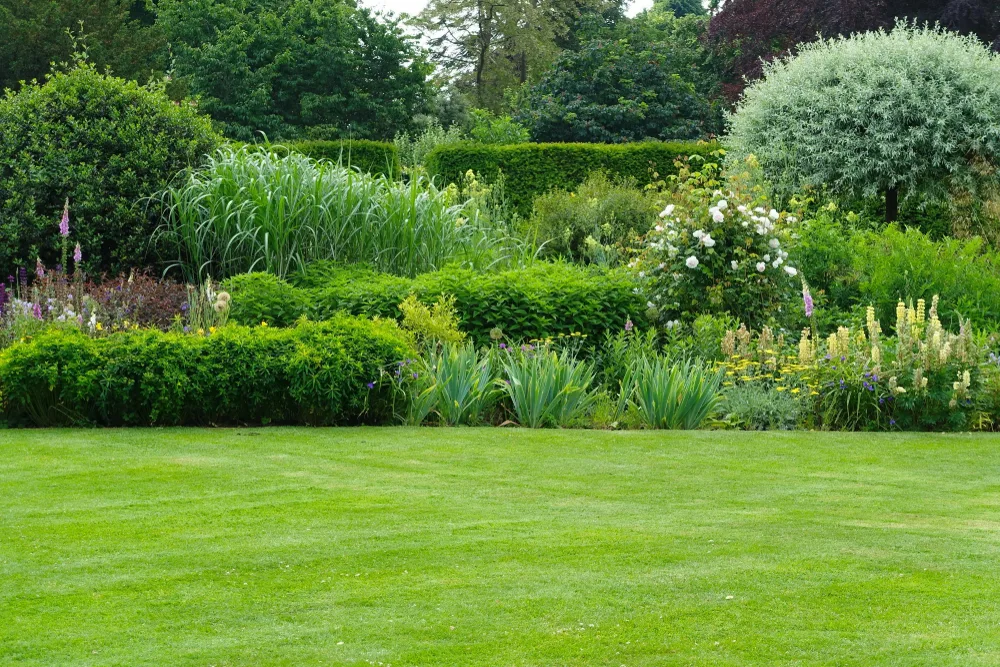
A carefully manicured lawn is beautiful in its own way. Short grass is comfortable to walk on, whether you are barefoot or in shoes. It lets you see where there may be danger lurking such as snakes, ants, spiders, or dog doodoo.
It also happens to be a wonderful place to lay down a blanket and have a summer picnic, all creepy crawlies aside.
However, a traditional lawn comes with the downfall that it is devoid of insect life – outside of those ones with the high-pitched whining voices, otherwise known as mosquitoes.
And to keep it homogenously green and free of dandelions, “weeds” and moles?
Well that takes consistent mowing, irrigating, weeding, and of course a whole slew of chemicals.
Did you know that nearly 80 million pounds of pesticides are used annually on lawns in the U.S.? That is a staggering amount of toxic chemicals!
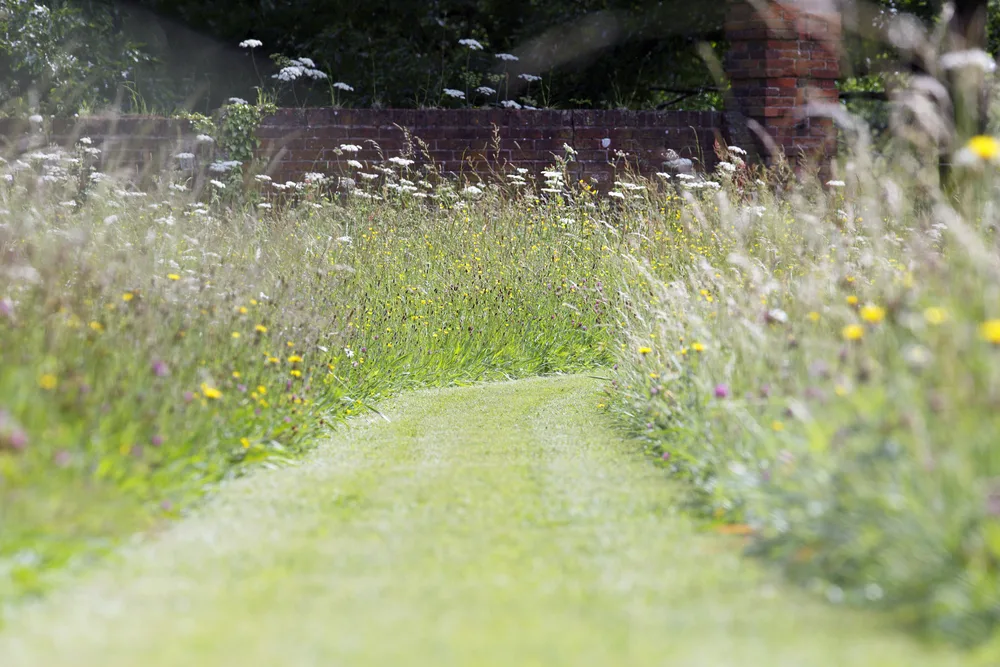
Not only are they bad news for insects, they are terrible for pets and children too. What is a childhood without playing outside, rolling around on the lawn?
If we are to provide a safe place for all wildlife, we must rethink the “modern” lawn. Mowing being a concept that is less than 200 years old.
How to start changing traditions
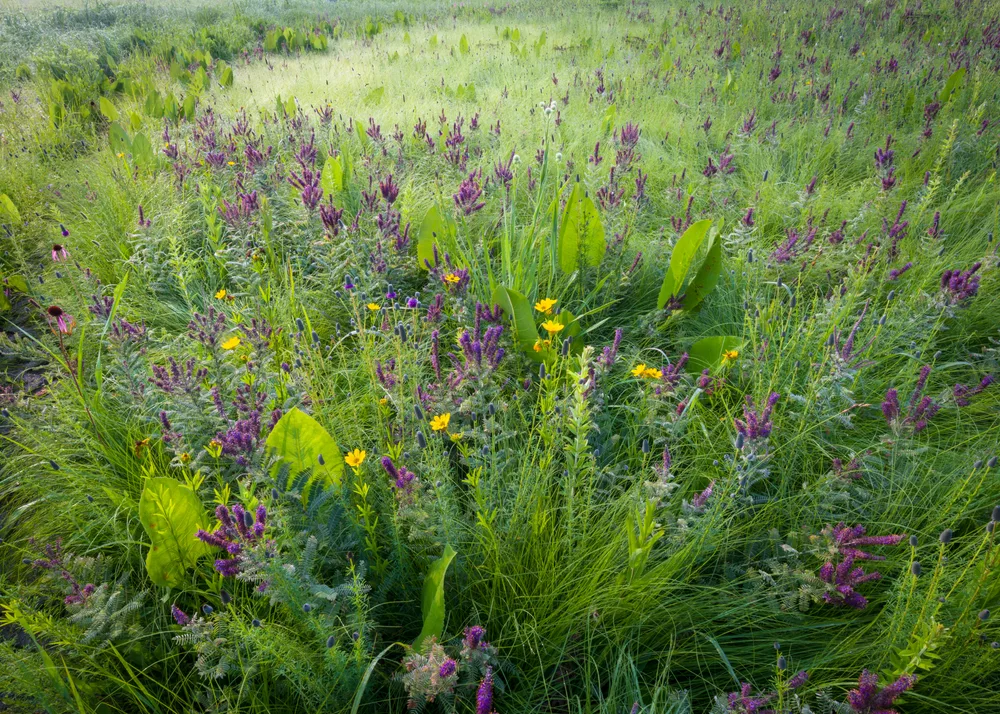
Realize first and foremost that chemicals are not needed to grow grass. Neither is it useful, or practical, to use vast amounts of clean, drinkable quality water to keep your lawn green.
Nearly 1/3 of all residential water use in the United States goes towards landscape irrigation! Let that sink in for a second. That can be taken as a selfish act of humankind, “If there is flowing water, let’s use it!”.
However, if you are living and gardening with sustainability in mind, reducing your water consumption may be, in fact, one of your top priorities.
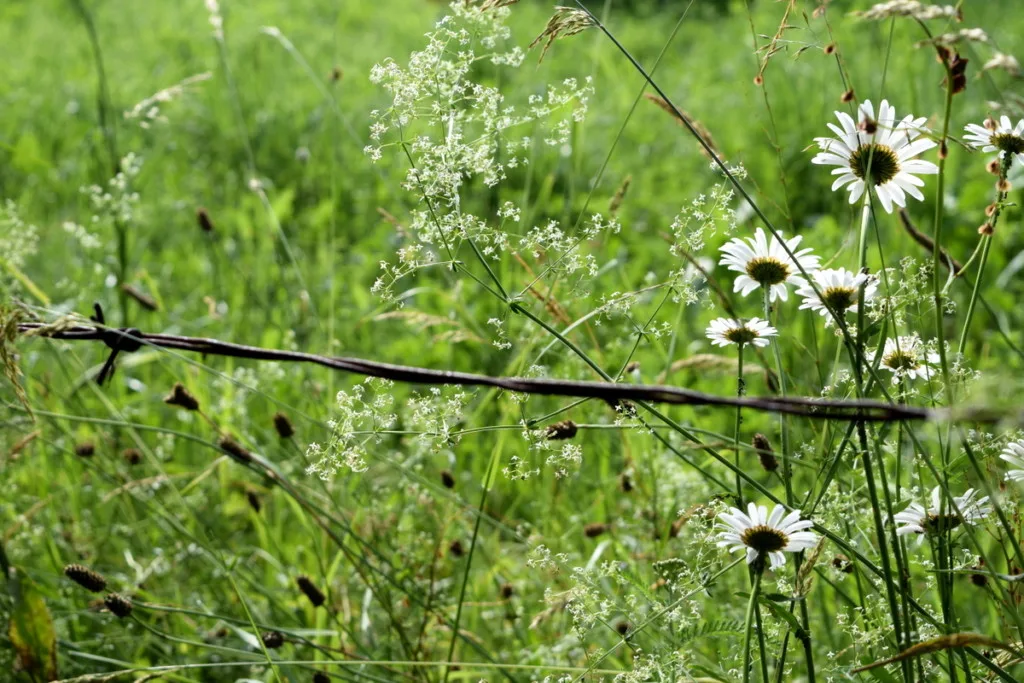
Stop using chemicals, reduce your need for irrigation and develop ways to promote diversity in your lawnscape.
That’s all there is to it!
Refrain from spraying chemicals on the land, in the hopes that now you won’t hurt anything downstream, anymore – there is always something, someone, some bird, insect, fox, owl, mouse, frog or fish downstream. We are all connected.
Be the positive change that nature desires and convert your lawn to a wildflower meadow, starting today!
Basics of turning your lawn into a wildflower meadow
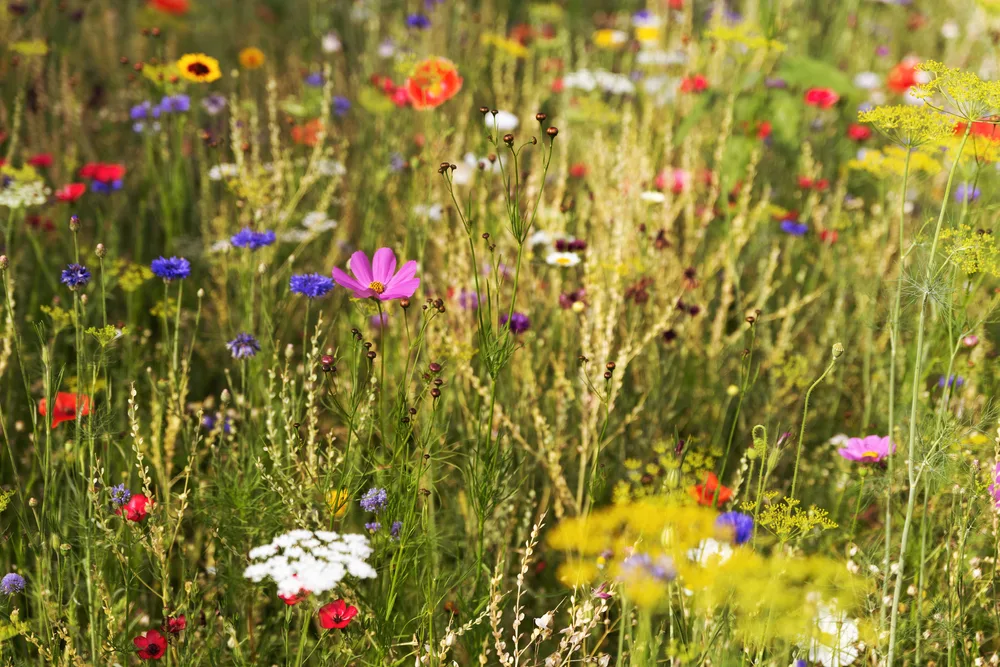
Now, that you are convinced that your lawn should embrace diversity and include multiple shades of green with splashes of crimson, violet, yellow, bronze, ochre, blue and mauve, the next step is to choose native species that will best grow where you are.
It is also important to note at this point that planting a meadow is not quite the same as planting a garden. When you plant garden seeds, you will see – and harvest – results in the same season.
With a wildflower meadow, you’ll often have to wait two seasons, or three, to reap the most benefits. See, natural meadows evolve over years and years. It takes time to develop intricate relationships between animals, plants and microorganisms.
While a wildflower lawn may never be a “true” meadow, there is a time and place for it – and that time is now. If you want to attract bees, increase insect populations and decrease your time spent tending to the grass, then you can safely know that a wildflower lawn is worth the time and effort you are just about to take.
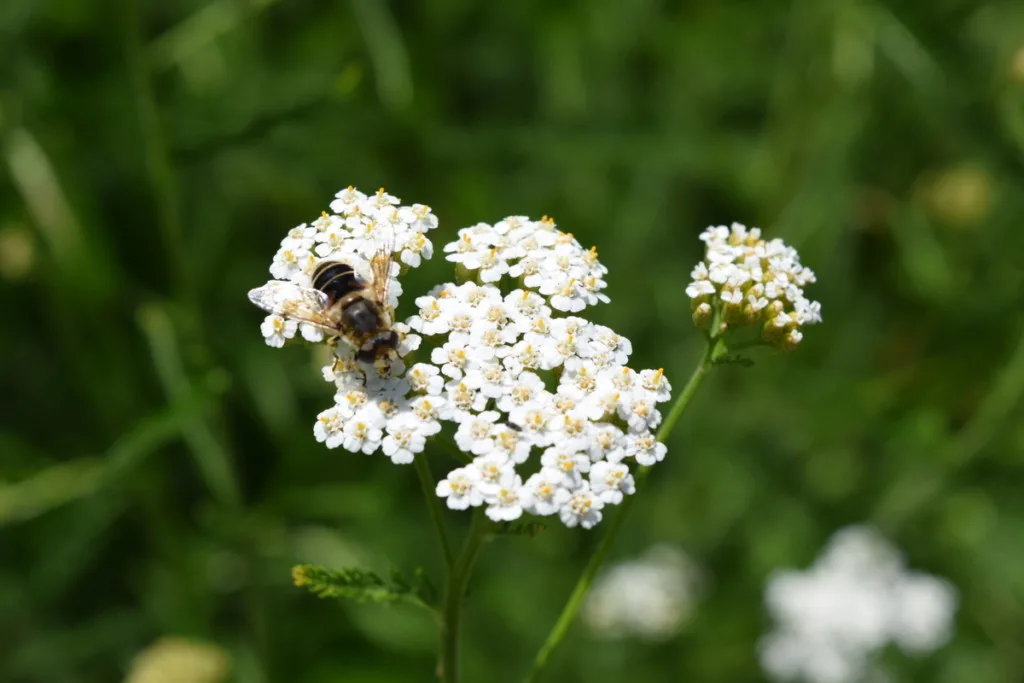
Wildflower lawns are best suited in sunny locations with well-drained soil, just as a meadow would occur naturally.
Are you ready to give up your mower, and replace it with a scythe?
Selecting native meadow species
What species you choose to incorporate into your wildflower lawn, will be dictated by your location on Earth.
How can you find out what grows locally? Visit an existing prairie or two, for several weeks in the summer to see what grows. Take detailed pictures, sit, observe and wonder at all the insects that come and go. Then pick up a reference book to find out just what plants you are looking at.
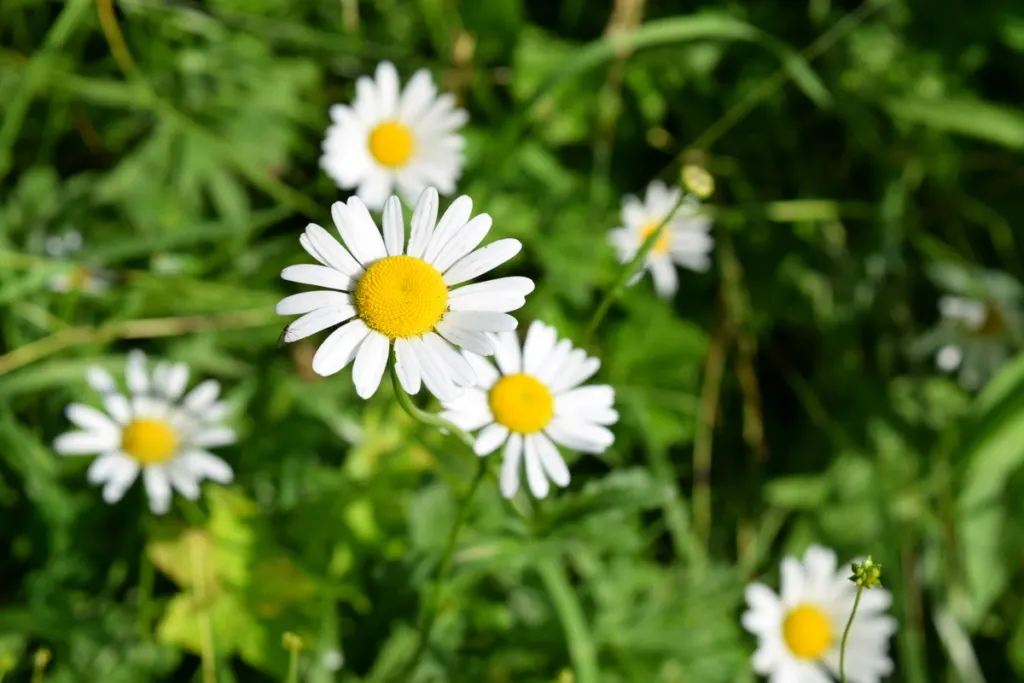
If you happen to have a nursery nearby, stop and ask as many questions as necessary to find the plants you are seeking. Depending on your whereabouts, some plants to include in your wildflower lawn may be:
- Asters (Symphyotrichum sp.)
- Bluets (Houstonia caerulea)
- Cinquefoil (Potentilla sp.)
- Cowslip (Primula veris)
- Eyebright (Euphrasia officinalis)
- Knapweed/Cornflower (Centaurea sp.)
- Lady’s bedstraw (Galium verum)
- Plantain (Plantago lanceolata)
- Ox-eye daisy (Leucanthemum vulgare)
- Red clover (Trifolium pratense)
- Selfheal (Prunella vulgaris)
- Violets (Viola sp.)
- Wild geraniums (Geranium maculatum)
- Wood sorrels (Oxalis acetosella)
- Yarrow (Achillea millefolium)
- Yellow rattle (Rhinanthus minor)
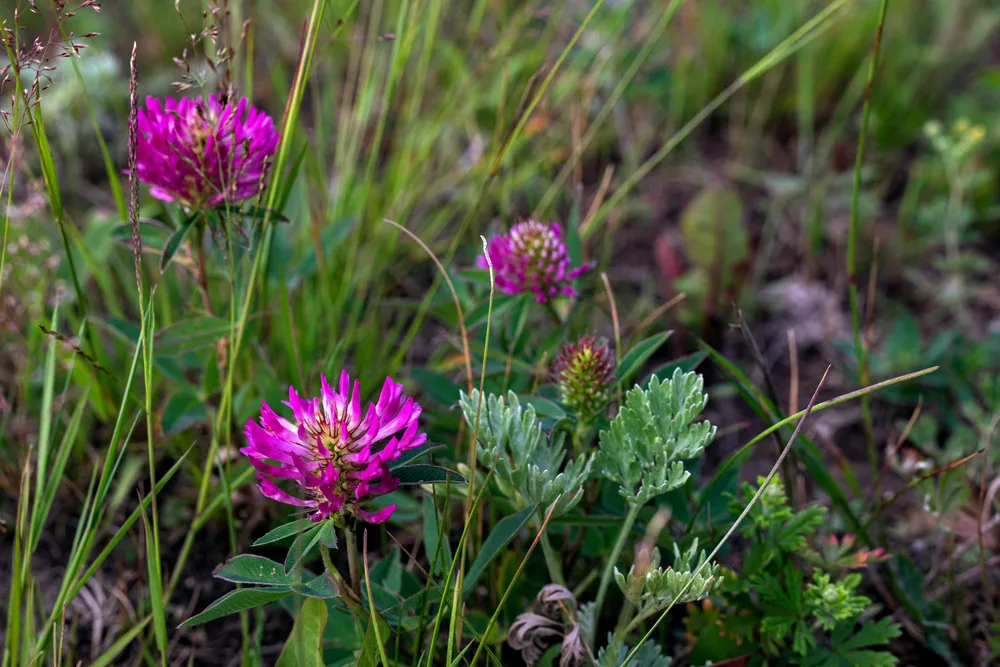
Of course, the list of wildflowers to plant in your meadow goes on and on. Once you get your “new lawn” established, other native plants will naturally come into place.
Plant a diversity of grasses in your wildflower lawn
Wildflower lawns are more than just flowers. They also consist of grasses (50-80% grass cover in a wildflower meadow), but not the most common lawn grasses below:
- Kentucky bluegrass
- Perennial ryegrass
- Fine fescue
- Tall fescue
- Bermudagrass
Not sure what type of grass that is currently growing in your lawn?
Here is how to identify the top 5 lawn grass species.
Grasses are important in every meadow because they ultimately provide protection and support for tall flowers, just as they help to prevent soil erosion with their deep, dense roots.
Grasses act as cover for grasshoppers, voles and all wildlife – providing them with a safe shelter and a beautiful resting place. For bees this is essential. They can rest, gather more pollen, rest again and move on.
You’ll need to do a bit more research to find out what native grasses grow near you.
Here is a list of more common meadow grasses to start your search:
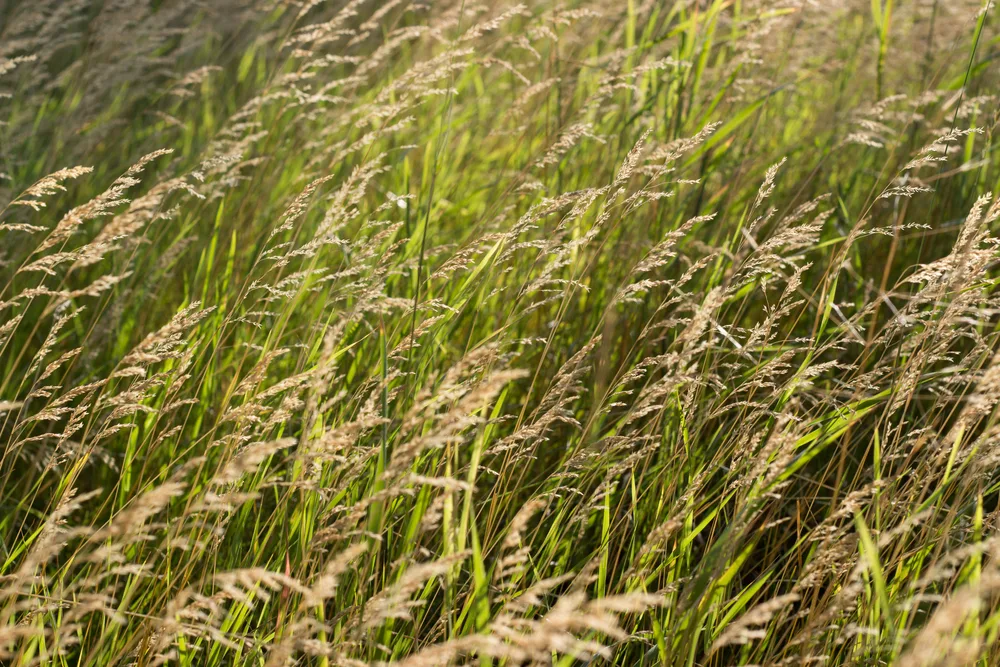
- Big bluestem (Andropogon gerardii)
- Buffalograss (Bouteloua dactyloides)
- Little bluestem (Andropogon scoparius)
- Meadow foxtail (Alopecurus pratensis)
- Sweet vernal grass (Anthoxanthum odoratum)
- Wild rye (Elymus virginicus)
And don’t forget to bring in some sedges for even greater diversity in your wildflower lawn!
Soil preparation for your wildflower meadow
Some articles may state to remove the turf before planting, I disagree. More than anything, the soil prefers to be covered, with something, anything.
If you remove all that is there, you are likely to end up with a yard of weeds, which is absolutely nothing like a swaying meadow full of grasses and flowers.
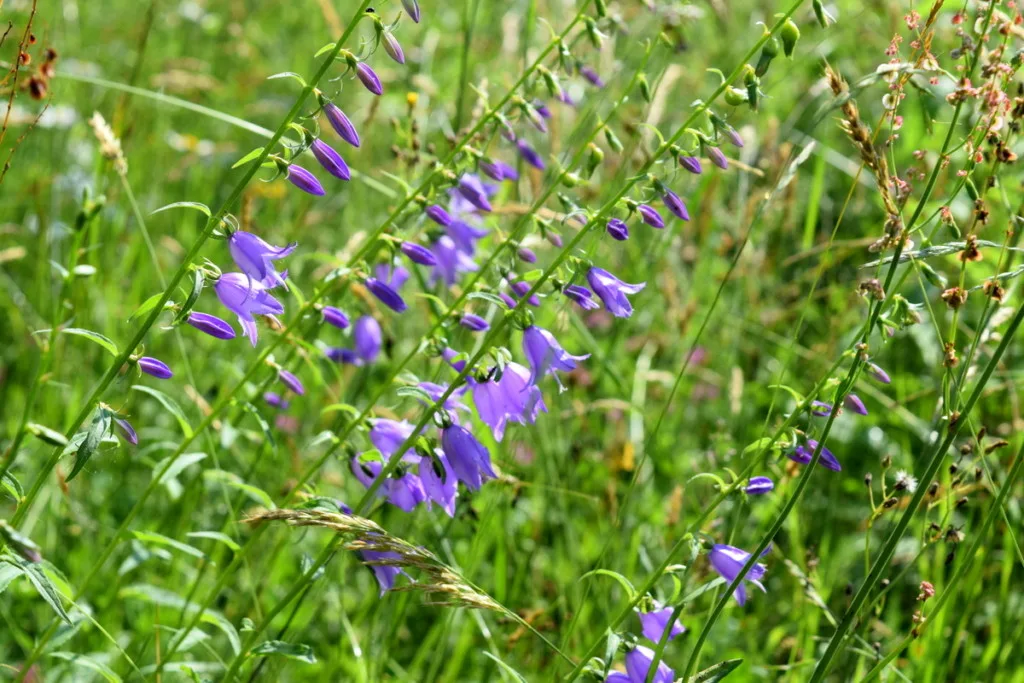
To begin establishing your wildflower lawn, you can plant wildflower plugs, or broadcast seeds – or both.
This all depends on how much time and money you have to invest, as well as the size of your land. That being said, meadow plants are not so demanding as regular green grass, and once they are established they will grow well without any additional soil improvements.
Planting a wildflower lawn is a win-win situation! Less work for you all around, from planting to mowing, and more food and increased habitat for wildlife. Work with, not against nature, and we all benefit.
The best time to plant your wildflower lawn?
Before planting-sowing, remember to mow as close to the ground as possible first.
Secondly, plant in fall for the best results. There is no need to amend the soil. If something already grows there, the soil is fertile enough. Think about how wildflowers grow naturally in ditches and along the side of the road. It will become the same situation in your very backyard.
Plant your wildflower lawn as the seeds would naturally fall in a meadow. For most plants, autumn is the perfect timing. For others, summer will be it. Then let them experience the winter cold as they sit on the soil, enjoying a time of cold stratification, before they germinate.
Planting in full sun is a must! Wildflowers will thrive with 6+ hours of sunlight per day.
Seeding, maintenance and care of your wildflower lawn
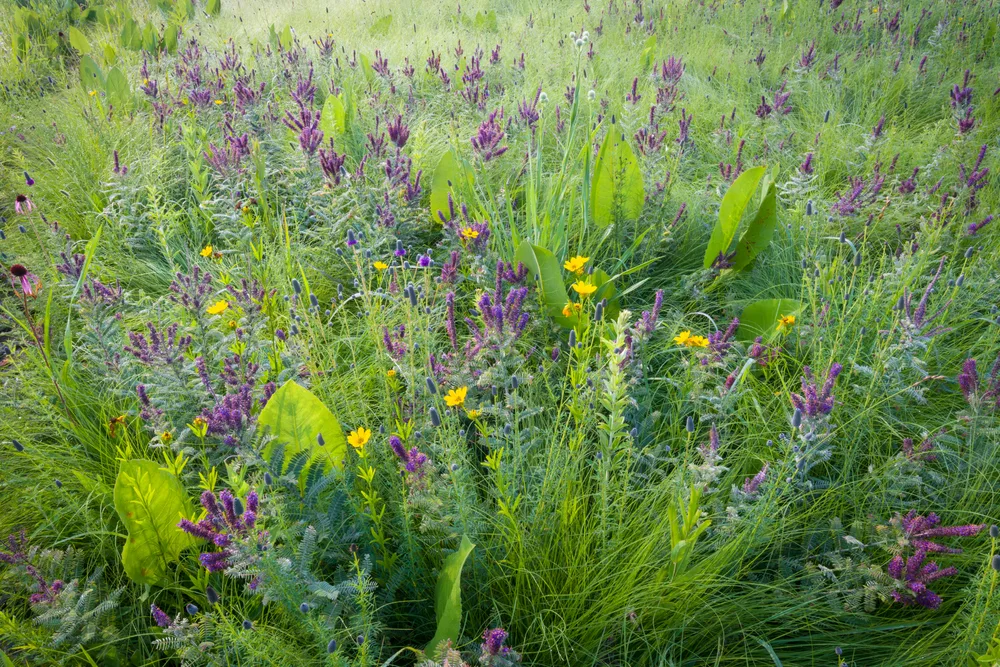
Depending on the size of your lawn, hand broadcasting the seeds will be a sufficient way of planting. If the seeds are very small, which is very likely with meadow seeds, you can mix them with a fine, damp sand to spread them more evenly. 4 parts sand to 1 part seed is a good ratio to shoot for.
You’ll quickly find that wildflower seeds are of all different weights and sizes. They can be purchased in a mix, or separately.
Refining your choices even further, you can choose between annual wildflower seeds, biennial seeds, perennial seeds, grass seed and wildflower mixes, or plain old grass seed mixes.
Related Reading: Annuals, Biennials and Perennials – 3 Plant Types You Need to Know
Low-maintenance wildflower lawns have the added benefit of being drought tolerant, and can survive anything nature has in store.
Plus, they only need to be mowed once or twice a year.
Discover some Wildflower Seed Mixes here to get you started.
In the first year
With a wildflower lawn in place, you will be dealing with several species, rather than just one type of grass + weeds.
Maintenance in the first year, as new plants germinate can be tricky, as they will all seem to pop up at different times, perhaps even going through an ugly duckling stage. Prepare mentally for it by understanding that annuals will germinate the fastest and will outshine all the others in the first year.
Perennials are slower to germinate and often slower to get going as they put much of their energy in root growth their first year. You won’t be able to see this activity, but it is exactly what is going on underground. They spend extra time in the beginning getting established, which helps them survive for years to come.
Be sure to let annuals flower and produce seeds before mowing at the highest setting, or scything, for the first time. You may even choose to wait a bit longer for the late-blooming species to drop as many seeds as possible. The longer you can wait out, the stronger your wildflower meadow will be next year.
Mowing in late fall or spring?
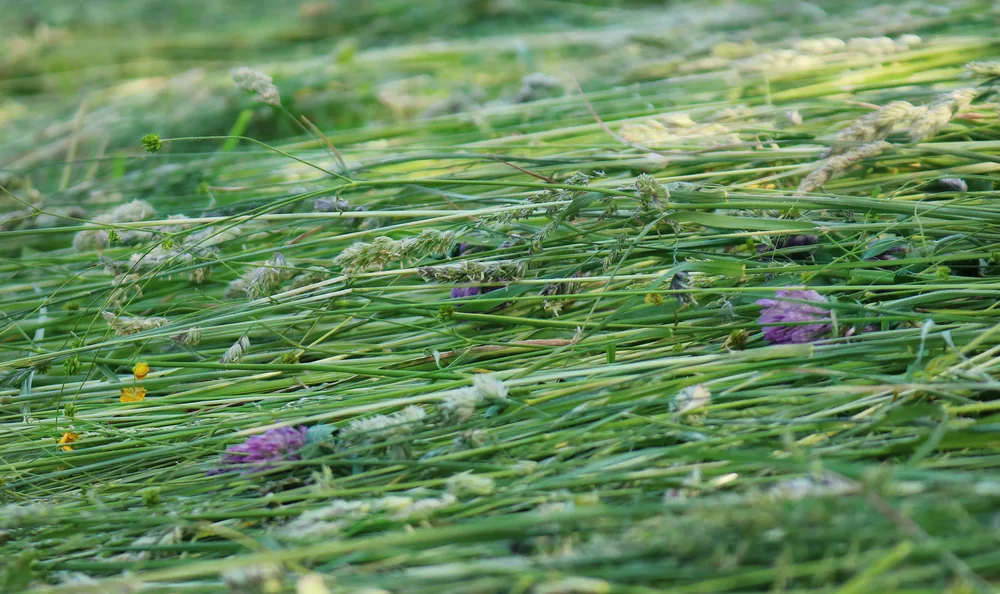
While you can easily mow grasses in late fall as they enter dormancy, there is also the possibility to leave them all winter and knock them down in spring. In this case you will be providing all sorts of insects and critters with a textured landscape to overwinter in.
If you notice any undesirable, non-native plants in your wildflower stand, remove them by hand before the seeds drop and burn them or dispose of them properly.
In the second year
Here is where your wildflower planting efforts really start to take off. With some luck, and wonderful weather, some biennials and perennials will bloom for the first time. It is an exciting time!
Seeds that didn’t germinate the first season are still in the ground, and this may be their year to start growing. The beautiful thing about a wildflower meadow is that is is always dynamically changing.
Now is the time to fill in gaps with wildflower or grass plugs. You can also go ahead and overseed those areas where plants are scarce.
Weeding by hand may be necessary if undesired annuals are still popping up.
In subsequent years
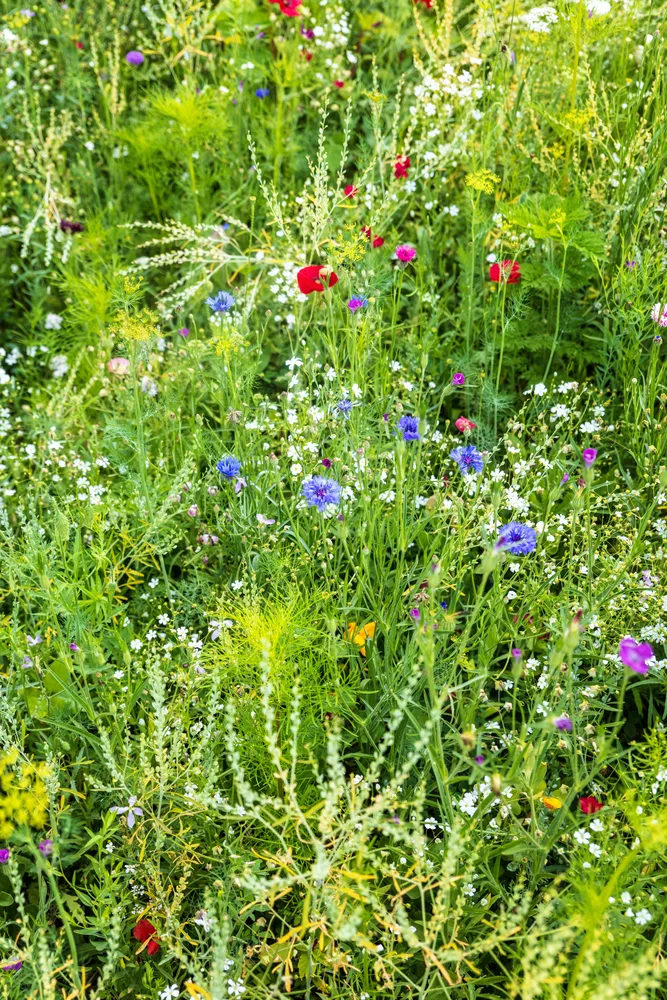
As your meadow matures, perennials will begin to take over. This is a magnificent thing! Let it happen naturally, and there will be less work and more joy for you.
It is important to remember that many species in your wildflower lawn can be considered foraged plants for food, medicine and natural dyestuff. Get to know every plant in your meadow by visiting it regularly and learning how to identify a myriad of its inhabitants.
A good resource to get started with foraging wild plants:
Edible Wild Plants: A North American Field Guide to Over 200 Natural Foods by Thomas Ellas and Peter Dykeman
Dealing with resistance
Truth be told, not everyone will like the idea of a wildflower lawn, neighbors and family included.
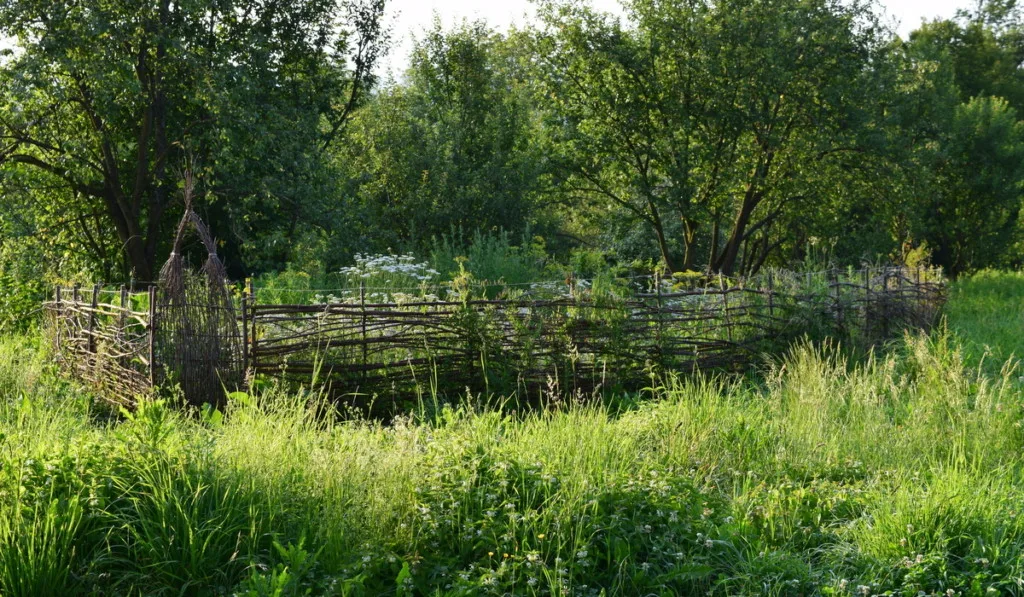
You may get complaints that it looks messy, it attracts rodents and snakes, it makes your property look abandoned and derelict…
Everyone is allowed to have an opinion. But you aren’t letting your grasses and wildflowers grow (or go) for them. You are letting it grow for the bees, for the survival of all insects, for the small furry creatures that need a safe home, for the birds, for all wildlife in general.
If we are to think about creating an environment with sustainability as the key focus, we must start rewilding as much as we are able. Even if it starts with a small patch or border in your backyard.
Are you ready to provide critical habitat for pollinators, improve soil health, prevent erosion and improve water quality, all the while enjoying the sights, sounds and smells that your wildflower lawn can provide?
Start planning your wildflower lawn now, and be ready to plant in fall!

Get the famous Rural Sprout newsletter delivered to your inbox.
Including Sunday musings from our editor, Tracey, as well as “What’s Up Wednesday” our roundup of what’s in season and new article updates and alerts.


